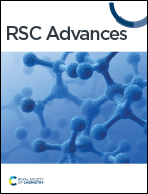Experimental study of CO2 capture by nanoparticle-enhanced 2-amino-2-methyl-1-propanol aqueous solution
Abstract
2-Amino-2-methyl-1-propanol (AMP) is often used as a moderator to enhance the CO2 capture capacity of absorbents due to its unique spatial site resistance structure, and relatively few studies have been conducted on the enhancement of AMP aqueous solutions by nanoparticles for CO2 capture. In order to investigate the effect of nanoparticles on the CO2 capture performance of AMP aqueous solution, different nanofluids were formulated in this paper using a two-step method, and a bubbling reactor and an oil bath were used as the experimental setup for absorption/desorption, and through comparative experiments, it was found that the type of nanoparticles, the solid content, and the different parameters have great influences on the CO2 absorption load and desorption rate. The experimental results show that the addition of TiO2 nanoparticles to the AMP base solution can accelerate the absorption–desorption mass transfer rate of CO2, and there exists an optimal solid content of 1 g L−1 (±1.0%, ±2.5%); after multiple absorption–desorption experiments, good cycling performance can still be achieved. The experimental results of the nanofluid-promoted mass transfer mechanism are also illustrated and analyzed in this paper.



 Please wait while we load your content...
Please wait while we load your content...